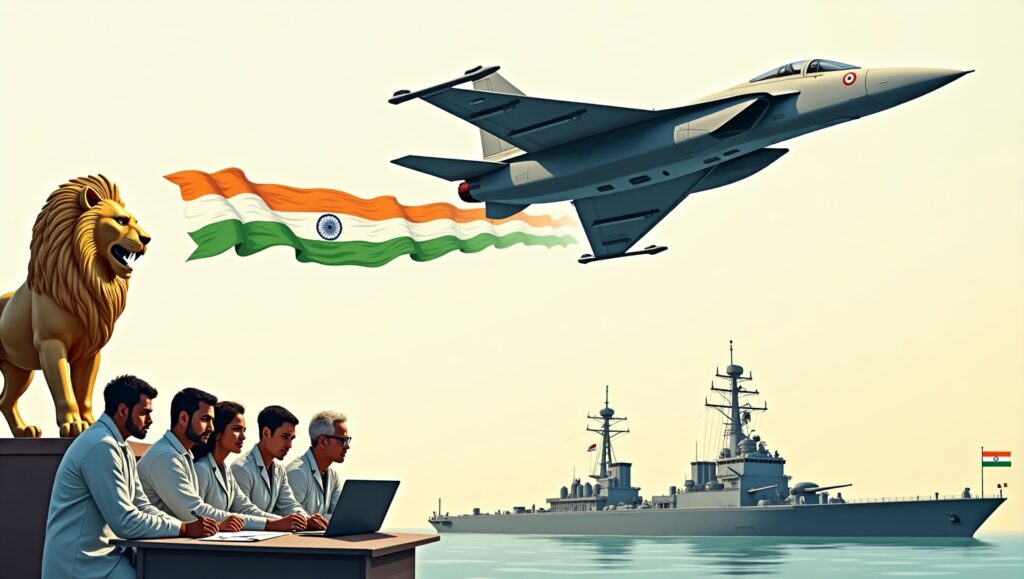India’s geopolitical environment is among the most complex in the world. Dealing with two nuclear-armed neighbors with unresolved border disputes and facing a rapidly evolving international system, India has placed defense modernization and strategic autonomy at the heart of its national security policy.
Over the past few years, New Delhi has stepped up its defense transformation—balancing domestic production aspirations with active diplomatic outreach. This blog examines how India’s defence diplomacy, strategic alliances, and increasing focus on self-reliance are transforming its military stance and international profile.
India’s Changing Defence Diplomacy Framework
India’s defense diplomacy architecture is tactically multi-layered, bringing together bilateral engagements, regional endeavors, and multilateral mechanisms to enhance its reach and ability. The prime pillars are:
- Conduct of joint military exercises to improve interoperability
- Strategic pacts for intelligence cooperation and logistics support
- Technology transfer and capacity-building with friendly countries
- Defense exports as foreign policy tools
Through the combination of hard power and cooperative frameworks, India is using diplomacy not only for alliances but also for capability development.
Strategic Partnerships and Global Engagements
United States
India-US defence relations have seen unprecedented growth. COMCASA (Communications Compatibility and Security Agreement) and BECA (Basic Exchange and Cooperation Agreement) framework agreements have enabled free flow of communication and geospatial data sharing between the two armies. The Malabar naval exercise reflects the strategic nexus of both democracies to secure the Indo-Pacific.
France
France remains a crucial partner, especially in aerospace and naval cooperation. The purchase of the Rafale fighter jet has significantly enhanced India’s air capability. Besides sales, France’s readiness to transfer technology and co-develop means that it is a long-term strategic ally for India’s defense upgrade program.
Russia
Despite worldwide realignments and growing Indo-US ties, Russia is still one of India’s most important defense partners. Collaborative ventures like the BrahMos missile system, S-400 air defense systems, and the shortly-to-be-produced AK-203 rifle bear witness to long-term technology and strategic cooperation.
The Quad and the Indo-Pacific
India’s engagement in the Quad (India, US, Japan, Australia) is indicative of its belief in a rules-based world order. Joint maritime initiatives in the Indo-Pacific region aim to prevent belligerent action by hostile nations, promote freedom of navigation, and ensure regional stability.
Regional Defence Cooperation
South Asia
India has proactively extended its defense diplomacy throughout South Asia. Defense agreements with Bangladesh and Sri Lanka emphasize maritime domain awareness, counterterrorism, and disaster relief. Military training programs for troops from these countries build stronger institutional relationships and strategic confidence.
Africa
Africa is slowly unfolding as a new defense frontier for India. India-Africa Defence Ministers’ Conclave and growing participation in peacekeeping and anti-piracy operations are some indicators of India’s aspirations to engage more in the global security apparatus by collaborating with African nations.
Atmanirbhar Bharat and Defence Self-Reliance
India’s push for Self-Reliant India (Atmanirbhar Bharat) in defense is a tactical move from being one of the world’s largest importers to becoming a genuine exporter.
Key developments are:
- Export of BrahMos missiles to the Philippines
- Lightweight artillery systems and drones for overseas markets
- Establishment of defense corridors to fuel innovation and scale
- Increased participation of private players and startups in defense R&D
The objective is not just to cut down dependence on foreign suppliers but also to create an indigenous military-industry complex with the capacity to meet India’s long-term strategic needs.
Challenges Ahead
Despite notable progress, India’s defense modernization effort has serious challenges ahead:
- Geopolitical balancing: Maintaining close ties with the US and Russia requires diplomatic finesse, especially during periods of tension between the two.
- Technology gaps: India remains behind in advanced defense technologies like stealth, advanced propulsion, and next-generation electronics.
- Production scalability: Going global in defense exports will mean surmounting bureaucratic delays, quality standards, and scaling up production capacities.
To surmount these, India must improve public-private partnerships, invest in research ecosystems, and streamline procurement and export policies.
Conclusion
India’s defense modernization is not so much about buying cutting-edge platforms—it’s a comprehensive strategy that integrates diplomacy, indigenous development, and global outreach. As local threats evolve and global power dynamics shift, India is positioning itself as a capable, reliable, and autonomous security provider in the Indo-Pacific and beyond.
By sustained focus on self-reliance and strategic partnerships, India’s defense policy is moving from reactive to proactive—becoming a key architect of regional stability in a tightening neighborhood.

